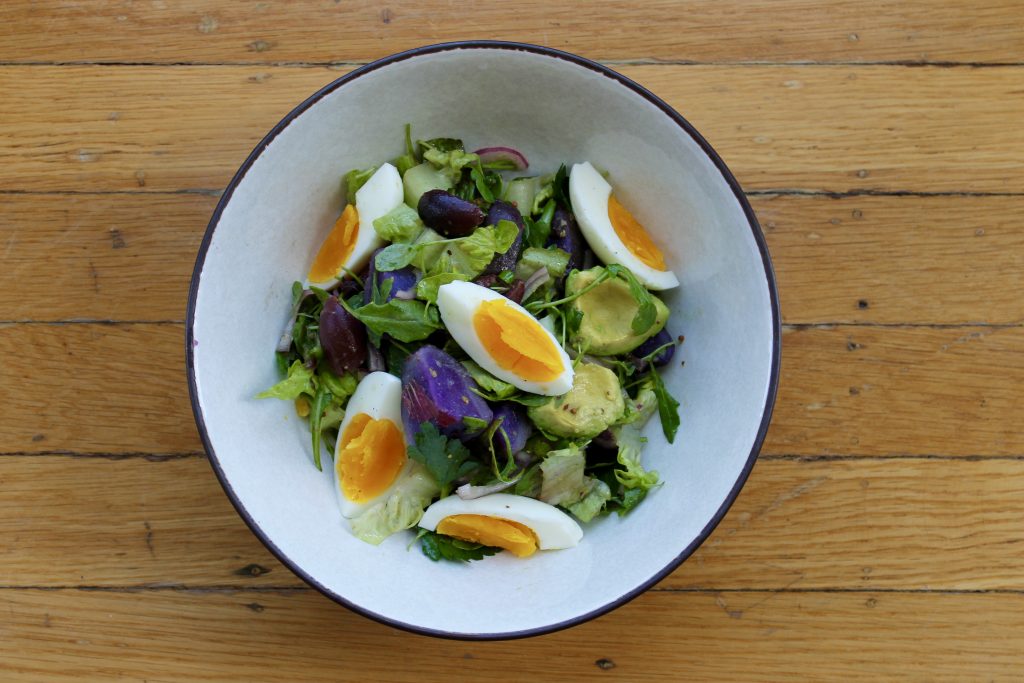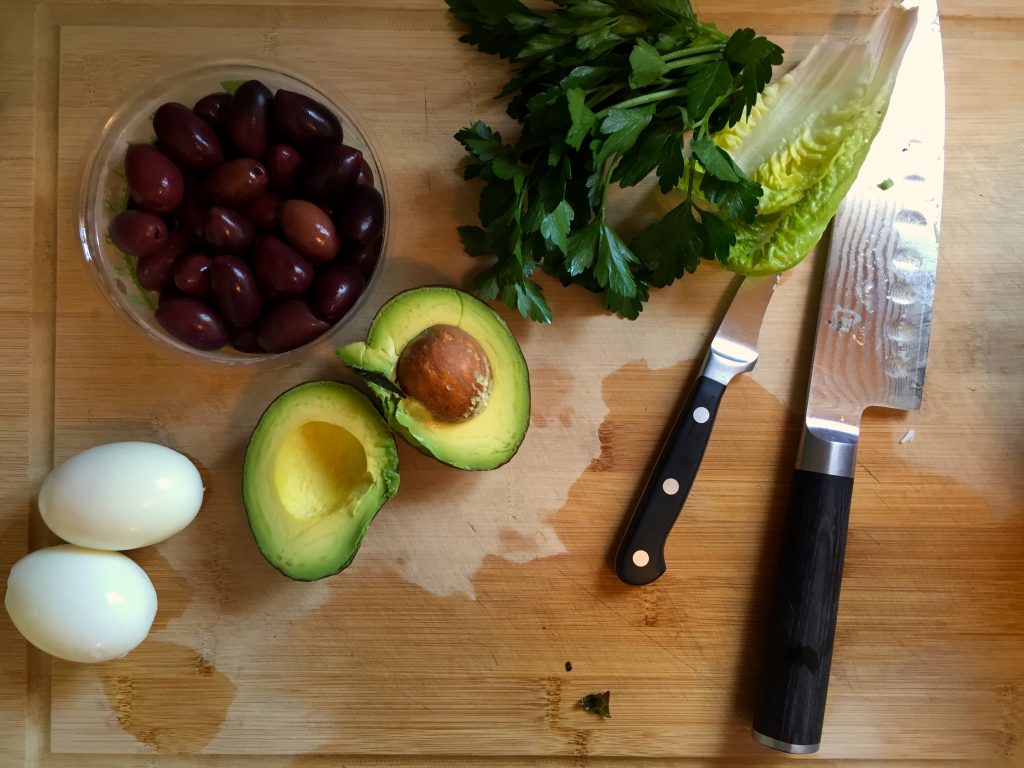

A confession: I never cook with recipes. In fact, I don’t like to write recipes, either. The way I use cookbooks and recipes is as a source of inspiration. A recipe, for me, is a general framework, rather than a list of steps that must be strictly followed.
Cooking is more art than science. What you feel during the process of cooking is many times more important than what you “know” you need to do. Guidelines are important, and, obviously, you need a basic skill to cook, but, once you acquire this skill, gradually, let yourself drift away from the list of ingredients and instructions and go with the flow.
The reason I write this is because I believe that, when it comes to salad making, this principle is even more relevant.
Making a salad is usually a simple process of combining separate ingredients, using dressing as the binding agent. The dressing is what turns these unrelated ingredients into a homogenous dish: a salad.
That means that, if you follow the basic principle of making a salad dressing (I’ll get to that) and working in the frame of what makes culinary sense, you have total freedom when making a salad.
Paleo Salad As a Meal
Many of our lunches are salads. If your concept of a salad is a pile of iceberg lettuce leaves with barely anything else, that’s not what I’m talking about. For me, a salad will be a combination of a variety of fresh vegetables and a respectable representation of healthy protein and fat. I can include meat in it, but not necessarily.
Vinaigrette
Vinaigrette is a general name for a salad dressing. In general, vinaigrette is made by mixing 3 parts oil and 1 part acid, like lemon or vinegar, with salt and pepper. The ingredients need to be whisked and combined until unified in a process called emulsion.
Here, too, the ratio is a general guideline, not a strict rule. Many things can be added to a vinaigrette: herbs, spices, honey, mustard, and more.
Purple Potato and Egg Salad
In this case, I combined purple potato, Romaine lettuce, arugula, parsley, purple onion, hardboiled egg, avocado, and black olives.
The greens provide micronutrient density. The eggs, avocado, and olives provide good fats and protein.
The vinaigrette is based on olive oil, lemon juice, sherry vinegar, and Dijon mustard.
Again – feel free to add or skip ingredients I include. For example, sardines can be a great addition to this salad. Also leftovers of sliced chicken or steak from last night dinner. Work with what you have.
Enjoy!




